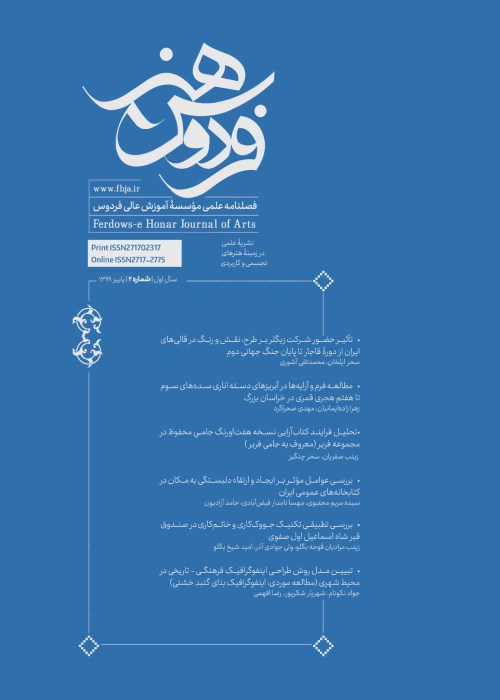Oral history of rural and nomadic carpet weaving in Fars province
Fars province is one of the most important centers for producing handmade carpets in Iran. The handmade carpets of this province, according to the divisions in the nomadic sector, generally include the three Qashqai, Lor and Khamseh tribes. And Khamseh consists of five tribes: Arab, Baseri, Ina Lu, Baharlu and Nafar, which are scattered from north to south of the province in different urban and rural areas. This makes Fars province have a special place as one of the valuable regions of carpet weaving in Iran and exporter of carpets and rugs.The Carpet weaving in the villages and tribes of this province form part of the essentials of women's lives.Usually, the preparation of raw materials such as wool for weaving was provided by each family based on the number of livestock And the better the family was financially and the more girls weaver, the bigger the black tent and the more weaves it naturally had. Since the nomads were constantly migrating and traveling, their weaves were small and did not exceed 6 meters for easier transportation. However, the same opening and closing of the frame and carpet during the migration, would also lead to skewing in the weaves. This research is aimed at discovering events and memories that occur in the process of production, wool, and the provision of raw materials, weave and restoration of Persian carpet by oral history.Oral history is in fact a consciously dialogue between two people about the dimensions of past events, both of which have historic significance and recorded to become a document and its durability. Oral history, as a research method from the beginning to the end, involves numerous, long, and timely stages. Which, if it meets its standards, will have tremendous results .According to the findings, the lack of attention to the oral history of hand-woven carpets in different regions of Iran has led to the isolation and non-transmission of science in this art-industry. And perhaps one of the reasons for the decline of carpet weaving and weavers turning to non-native patterns, was the lack of attention to oral history and carpet weaving history of each region and also the lack of attention to the experience and knowledge of weavers who had the largest share in producing this product. Therefore, recording oral history in any scientific field will create value and change in the existing tradition and establish scientific and cultural communication between generations. And its purpose is merely to record the lost historical documents, such as memories, experiences, and knowledge of people directly related to the topic in question. This process, in this research, was conducted through interviewing and away from any interference with and application of the researcher's personal views, merely to record the memories of individuals.In this qualitative research, Semi-structured interview tool was interviewed with 33 factors of rural and nomadic carpet Fars. Sampling method was selected as snowball or incremental and sample size based on theoretical saturation.As it is claimed, in Fars province, weaving was done in a completely decentralized manner, and this has led to more creativity and variety in weaving. But in the research conducted by Dr. Parham, 11 100-year-old carpets have been found that have been woven in the form of a workshop that was set up by 2 Qashqai khans between Khangasht and Deh Bid Fars. Also, Ordobadi factory, managed by Mr. Ebrahim Gharbi, which produced 150-140 machines for the production of large cloth carpets and was established until 1310, along with several other reasons mentioned in the text, is evidence of the rejection of this claim.In the past, among the nomads, they used their weaves as much as possible, and whenever the capacity of the carpets decreased, they used it for other purposes. For example, a carpet with worn lint was either spread out on the side of the stove or used as a bag for the feed of smaller and weaker animals. If there was a problem during and after weaving for newer carpets, they would repare it with their own creativity and the like-mindedness of those around them, or eventually sell it. Later, about 50 years ago, reparings people in the Vakil market learned the art and repaired problematic carpets purchased from nomads.
- حق عضویت دریافتی صرف حمایت از نشریات عضو و نگهداری، تکمیل و توسعه مگیران میشود.
- پرداخت حق اشتراک و دانلود مقالات اجازه بازنشر آن در سایر رسانههای چاپی و دیجیتال را به کاربر نمیدهد.


